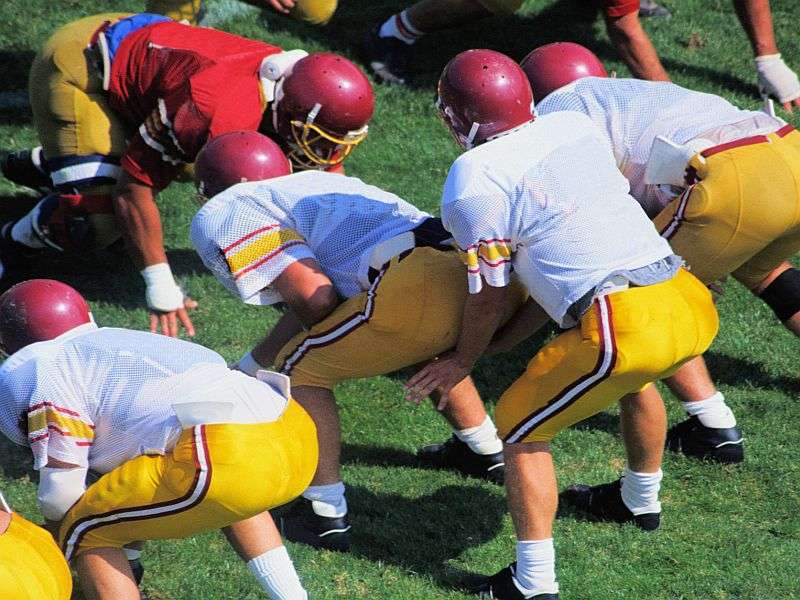Guidelines stop heat stroke deaths in high school athletes

(HealthDay)—There have been no deaths among high school football players during preseason practice in states with guidelines to help students get used to the heat over time, a new study says.
In contrast, heat stroke deaths during preseason practices were 2.5 times higher in states before they adopted the guidelines, the study found.
"A lot of people don't realize that heat stroke is preventable, and a bigger number of people may not realize that heat stroke is 100 percent survivable if it's treated appropriately," said study author Douglas Casa.
"The guidelines are an example of a policy change that can help prevent heat stroke," Casa said. He is chief executive officer at the Korey Stringer Institute at the University of Connecticut in Storrs.
The National Athletic Trainers' Association released protocols for helping athletes get used to the heat (heat acclimatization) in 2009. The guidelines were developed by an inter-association task force, which included representatives from the American Academy of Pediatrics, the American College of Sports Medicine, the U.S. Centers for Disease Control and Prevention (CDC), and other organizations.
The guidelines were developed in response to heat-related deaths in high school athletes. Between 1980 and 2015, there were 44 exertional heat stroke-related deaths during preseason high school football practices. A total of 22 of these deaths occurred in states that eventually went on to adopt the guidelines, the researchers said.
Exertional heat stroke is a life-threatening medical condition. It occurs when the body's core temperature gets too high because of excessive physical activity. It often occurs in hot weather, but can occur any time, according to the Korey Stringer Institute.
When preseason training begins, athletes may not be prepared to cope with the hot weather and the physical demands required because they're not used to exercising in the heat, the Institute notes.
Heat acclimatization methods help a body adapt to exercising in the heat and cope with heat stress. The guidelines include limiting practice to no more than one per day during the first one to five days of practice, and limiting practice sessions to no more than three hours in a day.
The study included 48 high school football preseasons. The high schools were in 14 states that had adopted heat stroke prevention guidelines since 2011. Casa noted only one exertional heat stroke death during these preseasons. And, that incident occurred at a school that "blatantly violated the state policy," he said.
David Csillan is head athletic trainer at Ewing High School in New Jersey. He said that "the data clearly shows that catastrophic events, resulting from exertional heat stroke, continue to be present in those schools neglecting to adopt the heat acclimatization guidelines as a minimum best practice."
According to Csillan, "Ensuring that proper guidelines are in place, that athletic trainers and others on the sports medicine team are closely monitoring activity, and that athletes recognize the signs and symptoms of exertional heat stroke are all important steps in reducing incidence."
Even though the guidelines have led to a drop in student-athlete deaths, Casa said that changing policies on a high school level is daunting. "You have to change them state by state because there's no national governing body that can set those guidelines," he said. "It's quite a process and probably one of the reasons that change is so slow for high school sports."
Casa, who served as co-chair of the task force that put together the guidelines, added that some states have a hard time breaking with tradition.
"States all make changes after they've had a tragedy," he said. "Very few states are proactive and say, 'We haven't had a tragedy, but this is working in all these other places, so to avert our potential tragedy we're going to make the change.' That doesn't happen often, unfortunately. But they all make the push once there's a death. We are constantly saying, do whatever you can before they die."
The CDC says that muscle cramping can be a first sign of heat-related illness that can lead to heat stroke. Other symptoms may include heavy sweating, weakness, cold and clammy skin, fast pulse, nausea or vomiting, and fainting.
If experiencing heat-related illness, it's important to get to a cooler location and lie down. If the condition is severe, call 911 and try to reduce body temperature with cool cloths or possibly a cool bath, the CDC advises. Do not give fluids in this situation.
Findings from the study were scheduled to be presented Thursday at the National Athletic Trainers' Association meeting in Baltimore. Findings presented at meetings are generally viewed as preliminary until they've been published in a peer-reviewed journal.
More information: The University of Connecticut offers additional details on heat acclimatization policies.
Copyright © 2016 HealthDay. All rights reserved.



















